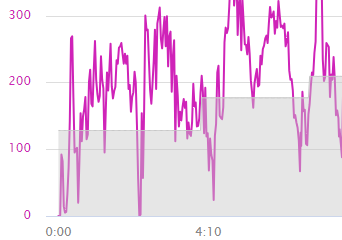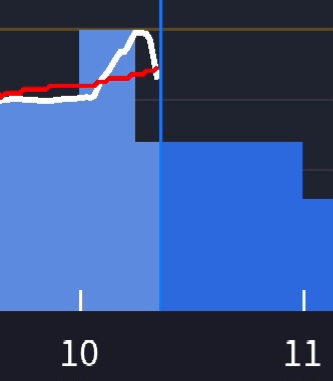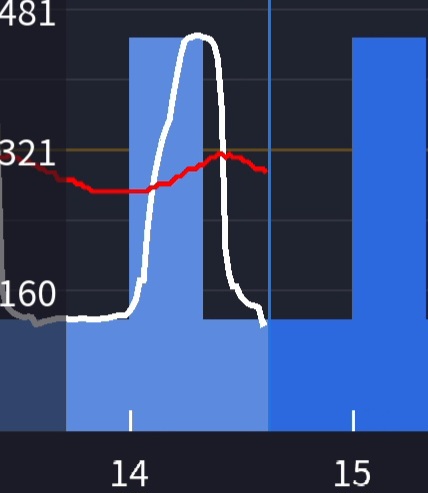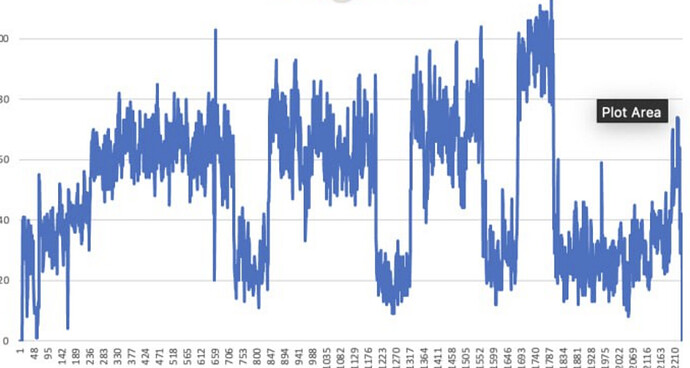Yes this switch should be coming later this week or early next.
This is great, thank you!
It’s great to hear that you are already addressing it. I was quite surprised to find about this new feature on today’s training. When at first it seemed good as trhe power was shown more precisely, when I approached some harder Z4-Z6 intervals, I found it really hard to maintain stable pace with this 10s+ lag on power indicator.
I prefferred the old way which was although quite imprecise (10% increments), allowed me to maintain given power much more easily with nearly real time indication.
With this new way, I found my power fluctuating all over during the 3 minutes intervals in Z4-Z6.
So, thanks for swift reaction and introducing the switch soon!
Yeah it dynamically tries to determine if it should be a 2 second delay or 10 second but to your point yes if you are not using ERG but trying to maintain power this would not be good. I did not consider this case.
I experienced this as well recently, with about 15 seconds needed to reach the target interval power. To me it also seems that the higher the cadence it is more difficult to reach/maintain the target. Could it be? I use combo Kickr Core + Assioma power meter.
A further thought on the this setting - would it be possible to make the power smoothing adjustable, e.g. on a scale from 1 to 10, or -10 to +10, depending on how the actual smoothing algorithm is working?
We used to have it this way but it seemed like it caused confusion. We will start with on/off for now and then go from there if we need to add it back. Right now it is variable meaning on interval change it is 2 seconds smoothing and then when power stablizes it is 10 seconds but obviously it’s not perfect.
AH, I also noticed this the last few days… If the intervals are only 30-60 secs, they are almost over before you have reached the max… So an option to turn this off would indeed be greatly appreciated.
I’m a little confused. I’m having the same issue, but Alex, are you saying that we can either have power smoothing OR having the power adjust immediately, we can’t have both?
When I was watching it, it seemed the target power itself was what was taking ages to change. If the first interval was 150 and the second was 170, I could watch the target power value climb slowly from 150-170 over a 10ish second duration (irrespective of what my actual power reading was)
Hi, I don’t understand this, meaning slow target changes, I can’t understand how that is possible unless you mean you feel it changing slowly in your legs.
But yes currently from 150 to 170 it climbs slowly, this is part of what I need to fix, it needs to be a bigger change than this for it to go quickly. I was making the smoothing stronger and stronger thinking that it was not strong enough for people when we figured out it was just not working at all  I just dialed it way back now and we will test this and see how people like it. Now with a 20 watt change it will be 2 seconds of smoothing. This should be out next week. Looks like we need to re-introduce multiple smoothing models.
I just dialed it way back now and we will test this and see how people like it. Now with a 20 watt change it will be 2 seconds of smoothing. This should be out next week. Looks like we need to re-introduce multiple smoothing models.
Can it be disabled? I really don’t understand the idea behind it, for me personally I want the raw values. But that’s probably kind of personal taste.
So in 4.4.0 there is an option “power smoothing”, if I disable it, do I still have any smoothing? And if enabled, is the target value really smoothed too, as mentioned above?
No this is the problem. Power smoothing does not turn it off right now, it will next week. Target should not be smoothed, I will have to test this, unless my developer got confused. I really don’t think it is.
I have long time refrained from reacting on this but I somehow expected that all this rambling would be the result…
Don’t mess with power display! If you have a real power meter connected, simply use 3 or 5s smoothing for display only. If you only have a smarttrainer connected, don’t smooth anything.
The nature of power readings from a real power meter is jumpy. That’s simply because power is the result of torque x velocity, measured 10 - 30 times per second by a real power meter. That is already ‘averaged’ to send out a 1 sec value and it is still jumpy. But anyone with a real power meter has long adapted to see that and actually ‘expects’ to see that. If I see a power trace, I can immediately see if it is from a real power meter or from a smarttrainer. Simply because there are (to my knowledge) no smarttrainers with a real power meter on the market. They simply have a velocity/power conversion curve that can be moved up/down following the resistance that is inputted and those power curves are un-naturly smooth. There may be some spin-bikes with real power meter or a very exclusive smart trainer somewhere, but I haven’t seen one yet.
So for those that are used to see power traces from smarttrainers, and now bought a real power meter, adapt to reality and get used to see those real power traces iso expecting a by nature impossible smooth trace. The slightest difference in velocity during your pedal stroke, or the torque that constantly changes around the 360° movement is what you should expect to see. Just do some light smoothing on display (never on recording!) to make the trace a bit more clear.
So this should really be only an option to smooth the power reading. And in my opinion only the value in the data field should be smoothed. The graph and the recorded data should never be smoothed, in my opinion. At least that’s how a wahoo or Garmin computer does it.
Oh god no. Only display never the real data!!!
For the sake of clarification, here is an excerpt from the same workout from the trainer and from the measurement on the cranks.
and here is the same only record from Garmin


I am not understanding exactly. You are just showing the difference between crank based power meter and your trainers power meter? If so, yes crank based is usually much more noisy.
Yeah other people want to see smooth graph too. A wahoo trainer has built in smoothing unless you specifically turn it off, so people with super messy power care about this where wahoo users would not need it at all.
Yes, I thought I’d show what @MedTechCD wrote. Maybe I misunderstood him, for which I apologize. 
And coming back to the topic, this is from today’s record. This rise curve could be steeper? 


Yes it will be steeper in the next version. I don’t know if it will be steep enough. We eventually might need to do something like wahoo does which is compare the target to the output and smooth it depending on how close it is to the target it. For ERG this would work


